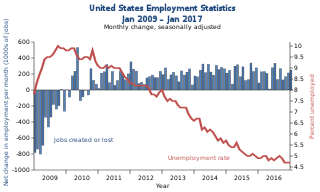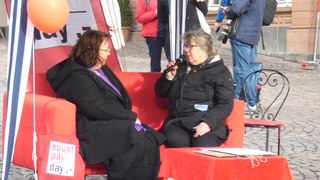Related Research Articles
A minimum wage is the lowest remuneration that employers can legally pay their employees—the price floor below which employees may not sell their labor. Most countries had introduced minimum wage legislation by the end of the 20th century. Because minimum wages increase the cost of labor, companies often try to avoid minimum wage laws by using gig workers, by moving labor to locations with lower or nonexistent minimum wages, or by automating job functions. Minimum wage policies can vary significantly between countries or even within a country, with different regions, sectors, or age groups having their own minimum wage rates. These variations are often influenced by factors such as the cost of living, regional economic conditions, and industry-specific factors.

A career is an individual's metaphorical "journey" through learning, work and other aspects of life. There are a number of ways to define career and the term is used in a variety of ways.

Underemployment is the underuse of a worker because their job does not use their skills, offers them too few hours, or leaves the worker idle. It is contrasted with unemployment, where a person lacks a job at all despite wanting one.

The labor force is the actual number of people available for work and is the sum of the employed and the unemployed. The U.S. labor force reached a record high of 168.7 million civilians in September 2024. In February 2020, at the start of the COVID-19 pandemic in the United States, there were 164.6 million civilians in the labor force. Before the pandemic, the U.S. labor force had risen each year since 1960 with the exception of the period following the Great Recession, when it remained below 2008 levels from 2009 to 2011. In 2021, The Great Resignation resulted in record numbers in voluntary turnover for American workers.
The H-1B is a visa in the United States under the Immigration and Nationality Act, section 101(a)(15)(H), that allows United States employers to employ foreign workers in specialty occupations. It is the largest visa category in the United States in terms of guest worker numbers. A specialty occupation requires the application of specialized knowledge and a bachelor's degree or the equivalent of work experience. The duration of stay is three years, extendable to six years, after which the visa holder can reapply. Laws limit the number of H-1B visas that are issued each year. There exist congressionally mandated caps limiting the number of H-1B visas that can be issued each fiscal year, which is 65,000 visas, and an additional 20,000 set aside for those graduating with master’s degrees or higher from a U.S. college or university. An employer must sponsor individuals for the visa. USCIS estimates there are 583,420 foreign nationals on H-1B visas as of September 30, 2019. The number of issued H-1B visas have quadrupled since the first year these visas were issued in 1991. There were 206,002 initial and continuing H-1B visas issued in 2022.
Structural unemployment is a form of involuntary unemployment caused by a mismatch between the skills that workers in the economy can offer, and the skills demanded of workers by employers. Structural unemployment is often brought about by technological changes that make the job skills of many workers obsolete.
A skilled worker is any worker who has special skill, training, or knowledge which they can then apply to their work. A skilled worker may have learned their skills through work experience, on-the-job training, an apprenticeship program or formal education. These skills often lead to better outcomes economically. The definition of a skilled worker has seen change throughout the 20th century, largely due to the industrial impact of the Great Depression and World War II. Further changes in globalisation have seen this definition shift further in Western countries, with many jobs moving from manufacturing based sectors to more advanced technical and service based roles. Examples of formally educated skilled labor include engineers, scientists, doctors and teachers, while examples of less formally educated workers include crane operators, CDL truck drivers, machinists, drafters, plumbers, craftsmen, cooks and bookkeepers.
Job security is the probability that an individual will keep their job; a job with a high level of security is such that a person with the job would have a small chance of losing it. Many factors threaten job security: globalization, outsourcing, downsizing, recession, and new technology, to name a few.

The labor force in Japan numbered 65.9 million people in 2010, which was 59.6% of the population of 15 years old and older, and amongst them, 62.57 million people were employed, whereas 3.34 million people were unemployed which made the unemployment rate 5.1%. The structure of Japan's labor market experienced gradual change in the late 1980s and continued this trend throughout the 1990s. The structure of the labor market is affected by: 1) shrinking population, 2) replacement of postwar baby boom generation, 3) increasing numbers of women in the labor force, and 4) workers' rising education level. Also, an increase in the number of foreign nationals in the labor force is foreseen.

Science, technology, engineering, and mathematics (STEM) is an umbrella term used to group together the distinct but related technical disciplines of science, technology, engineering, and mathematics. The term is typically used in the context of education policy or curriculum choices in schools. It has implications for workforce development, national security concerns, and immigration policy, with regard to admitting foreign students and tech workers.
A Bachelor of Software Engineering HonoursBSEHons is an undergraduate academic degree awarded for completing a program of study in the field of software development for computers in information technology.
The economy of St. Louis, Missouri itself is relatively small; most of the area's GDP and office space is based in nearby St. Louis County. This is mostly due to decades of white flight
In economics, deskilling is the process by which skilled labor within an industry or economy is eliminated by the introduction of technologies operated by semi- or unskilled workers. This results in cost savings due to lower investment in human capital, and reduces barriers to entry, weakening the bargaining power of the human capital. Deskilling is the decline in working positions through the machinery or technology introduced to separate workers from the production process.
Occupational inequality is the unequal treatment of people based on gender, sexuality, age, disability, socioeconomic status, religion, height, weight, accent, or ethnicity in the workplace. When researchers study trends in occupational inequality they usually focus on distribution or allocation pattern of groups across occupations, for example, the distribution of men compared to women in a certain occupation. Secondly, they focus on the link between occupation and income, for example, comparing the income of whites with blacks in the same occupation.

Christina Duckworth Romer is the Class of 1957 Garff B. Wilson Professor of Economics at the University of California, Berkeley and a former chair of the Council of Economic Advisers in the Obama administration. She resigned from her role on the Council of Economic Advisers on September 3, 2010.

Unemployment in the United States discusses the causes and measures of U.S. unemployment and strategies for reducing it. Job creation and unemployment are affected by factors such as economic conditions, global competition, education, automation, and demographics. These factors can affect the number of workers, the duration of unemployment, and wage levels.
To measure the impact that illegal immigrants is hard to accurately display for a plethora of reasons. Not only are we using rough estimations on the number of illegal immigrants in our country but also having to decipher who many resources they are using and if their children are also using the resources that are handed out. Some research shows that illegal immigrants increase the size of the U.S. economy/contribute to economic growth, enhance the welfare of natives, contribute more in tax revenue than they collect, reduce American firms' incentives to offshore jobs and import foreign-produced goods, and benefit consumers by reducing the prices of goods and services. On the other hand, there is data that shows that illegal immigrants are using programs that the government provides.

In the United States, despite the efforts of equality proponents, income inequality persists among races and ethnicities. Asian Americans have the highest median income, followed by White Americans, Hispanic Americans, African Americans, and Native Americans. A variety of explanations for these differences have been proposed—such as differing access to education, two parent home family structure, high school dropout rates and experience of discrimination and deep-seated and systemic anti-Black racism—and the topic is highly controversial.

The gender pay gap or gender wage gap is the average difference between the remuneration for men and women who are employed. Women are generally found to be paid less than men. There are two distinct measurements of the pay gap: non-adjusted versus adjusted pay gap. The latter typically takes into account differences in hours worked, occupations chosen, education and job experience. In other words, the adjusted values represent how much women and men make for the same work, while the non-adjusted values represent how much the average man and woman make in total. In the United States, for example, the non-adjusted average woman's annual salary is 79–83% of the average man's salary, compared to 95–99% for the adjusted average salary. The reasons for the gap link to legal, social and economic factors. These include having children, parental leave, gender discrimination and gender norms. Additionally, the consequences of the gender pay gap surpass individual grievances, leading to reduced economic output, lower pensions for women, and fewer learning opportunities.

David H. Autor is an American economist, public policy scholar, and professor of economics at the Massachusetts Institute of Technology (MIT), where he also acts as co-director of the School Effectiveness and Inequality Initiative. Although Autor has contributed to a variety of fields in economics his research generally focuses on topics from labor economics.
References
- ↑ Blair, Peter Q. (2021-07-01). "Skills, Degrees and Labor Market Inequality". National Bureau of Economic Research. Retrieved 2021-08-19.
- ↑ Blair, Peter Q. (2021-04-01). "Searching for STARs: Work Experience as a Job Market Signal for Workers without Bachelor's Degrees". National Bureau of Economic Research. Retrieved 2021-04-01.
- ↑ Auguste, Byron (2021-07-20). "The majority of Americans lack a college degree. Why do so many employers require one?". The Washington Post. Retrieved 2021-08-19.
- ↑ Census, U.S. (2020-03-20). "U.S. Census Bureau Releases New Educational Attainment Data". U.S. Census. Retrieved 2021-04-01.
- ↑ Blair, Peter Q. (2021-06-28). "The Disparate Racial Impact of Requiring a College Degree". The Wall Street Journal. Retrieved 2021-04-01.
- ↑ "STARs: Skilled Through Alternative Routes". Opportunity@Work. 2021-04-01. Retrieved 2021-04-01.
- ↑ Lohr, Steve (2020-12-03). "Up to 30 Million in U.S. Have the Skills to Earn 70% More, Researchers Say". The New York Times. Retrieved 2021-04-01.
- ↑ Fain, Paul (2020-12-04). "Job Transitions for Skilled Workers Without Degrees". Inside Higher Ed. Retrieved 2021-04-01.
- ↑ Baskin, Kara (2021-03-24). "5 ways to close the tech industry's race gap through education". MIT Sloan. Retrieved 2021-04-01.
- ↑ Chopra, Karan (2020-07-19). "We shouldn't chase economic recovery; we should chase economic redesign". Fortune. Retrieved 2021-04-01.